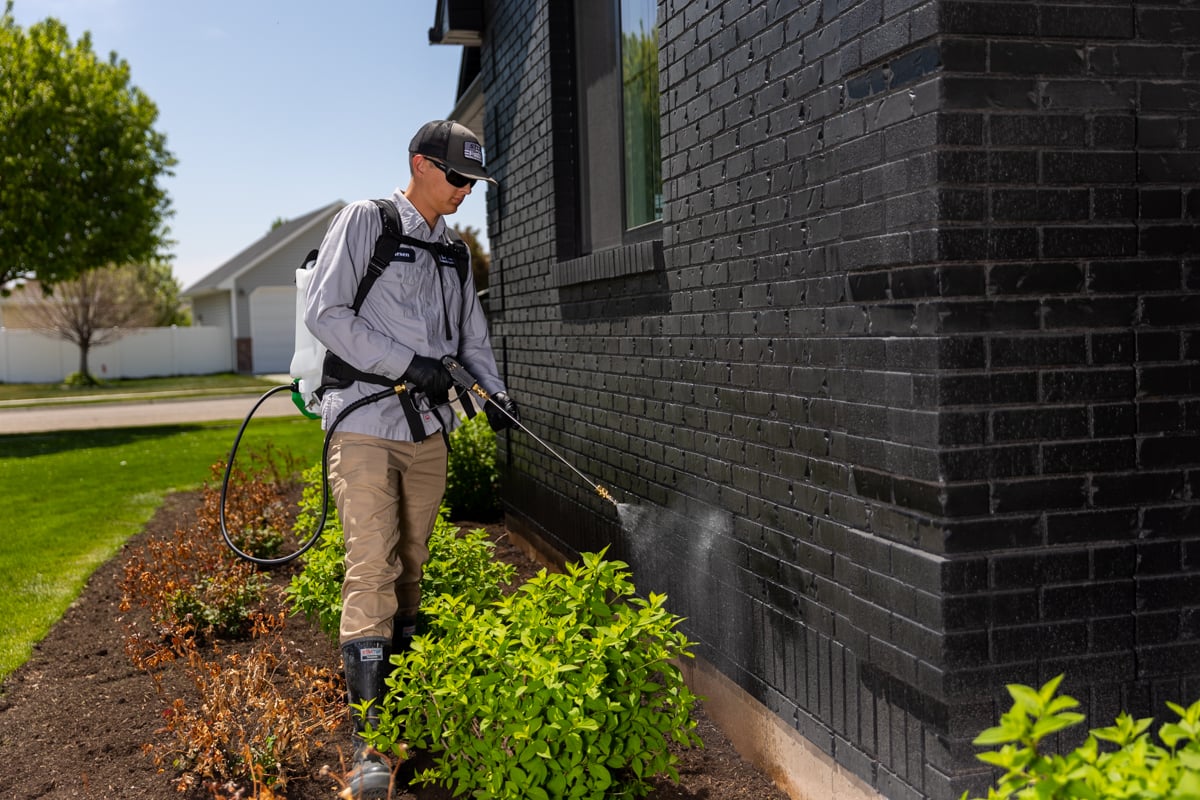Bed Pest Treatment Malfunction: Contrasting Chemical Vs. Non-Chemical Solutions
In the world of parasite control, especially when dealing with the relentless problem of bed pests, the choice between chemical and non-chemical therapy solutions can be a pivotal one. Both approaches provide distinctive benefits and disadvantages, influencing variables such as efficiency, safety factors to consider, and overall price. By checking out the nuanced information of each technique, a more clear understanding of which course to pursue in resolving a bed pest problem can be acquired.
Efficiency of Chemical Treatments
Chemical therapies for bed bug invasions have actually been extensively identified for their quick and potent effectiveness in removing these insects. When taking into consideration the performance of chemical therapies, it is critical to comprehend that they can offer a quick and thorough service to a bed bug trouble.
In addition, chemical therapies have the benefit of using residual impacts, implying that they can proceed to get rid of bed bugs also after the initial application. This recurring activity is particularly beneficial in combating any kind of prospective re-infestations. Additionally, the quick action of chemical treatments can bring relief to individuals facing serious bed bug invasions, permitting them to regain control of their home rapidly.
Security Worry About Chemical Solutions
One critical aspect that calls for careful factor to consider when utilizing chemical solutions for bed insect therapy is guaranteeing the security of residents and the setting. Exposure to specific chemicals used in bed bug therapies can lead to respiratory system concerns, skin irritability, or various other unfavorable reactions, specifically in individuals with pre-existing conditions or sensitivities.
In addition, the environmental impact of chemical options is one more significant consideration. Some pesticides made use of in bed pest treatments might be dangerous to advantageous insects, wild animals, and environments if they leach into the soil or water supply. It is necessary to utilize chemical treatments judiciously, complying with safety and security guidelines, and considering much less toxic options to alleviate these risks and guarantee the effective and safe monitoring of bed bug invasions.
Benefits of Non-Chemical Methods
Considering the possible security worries and environmental effect connected with chemical solutions for bed bug treatment, exploring non-chemical approaches presents a promising choice with numerous distinctive advantages. Non-chemical methods supply a more secure alternative for houses, specifically those with individuals, pets, or youngsters sensitive to extreme chemicals. These approaches remove the dangers of exposure to hazardous materials, lowering the capacity for unfavorable health results. Moreover, non-chemical treatments are eco pleasant, as they do not add to air or water contamination, making them a sustainable selection for bug control.
In addition, non-chemical remedies can be effective in targeting bed bugs, including hard-to-reach locations where chemical therapies might not pass through. Methods such as warmth therapy, vacuuming, steam cleansing, and bed mattress coverings offer thorough elimination without the use of unsafe chemicals. Moreover, non-chemical techniques can be much less disruptive, calling for very little prep work and permitting quicker reentry into treated areas. Generally, choosing for non-chemical bed insect treatment techniques not only prioritizes safety and security and environmental management yet also ensures thorough and reliable insect control.
Limitations of Non-Chemical Treatments

Furthermore, non-chemical treatments frequently require several applications to accomplish successful elimination. This can be time-consuming and may not always ensure total elimination of all bed insects and their eggs, especially in hidden or hard-to-reach locations.
In addition, the success of non-chemical treatments heavily depends on correct implementation and thoroughness, which can be challenging for people without expert experience. Inadequate application of non-chemical techniques might lead to incomplete obliteration, leading to persistent invasions and the need for added therapies.
For that reason, while non-chemical therapies have their benefits, it is important to acknowledge these limitations and consider them when establishing one of the most reliable method for handling bed insect invasions.
Price Comparison: Chemical Vs. Non-Chemical Options
Provided the restrictions linked with non-chemical treatments, a crucial element to examine in the context of bed pest administration is the price contrast this article in between chemical and non-chemical options. Chemical treatments generally include the application of pesticides by professionals, which can range from $250 to $900 per area, depending upon the seriousness of the invasion and the dimension of the location to be dealt with. In contrast, non-chemical treatments like warm therapy or steam can be more expensive, with prices ranging from $1,000 to $6,000 for an entire home. While the first expense of chemical treatments might seem lower, numerous therapies might be called for to fully get rid of the infestation, potentially enhancing the overall expense. On the other hand, non-chemical choices might supply a much more lasting and environment-friendly solution, although they can be cost-prohibitive for some people. Eventually, when taking into consideration the expense of bed pest therapy alternatives, it is necessary to evaluate the in advance costs versus the efficiency and long-term sustainability of the selected approach.
Verdict

Thinking about the potential safety issues and ecological effect associated with chemical remedies for bed pest therapy, exploring non-chemical techniques provides a promising choice with a number of distinct benefits.Provided the restrictions linked with non-chemical therapies, a vital facet to assess in the context of bed pest monitoring linked here is the expense contrast between chemical and non-chemical alternatives. In comparison, non-chemical treatments like warm treatment or vapor can be much more pricey, with prices ranging from $1,000 to $6,000 for a whole home. While the preliminary expense of chemical treatments may appear lower, several therapies may be required to completely eradicate the infestation, possibly enhancing the overall cost.In final thought, when comparing chemical and non-chemical bed bug treatment options, it is crucial to take into consideration effectiveness, security, benefits, restrictions, and price.
Comments on “Top Quality A1 Pest Control Services Charlotte - Safeguard Your Home”